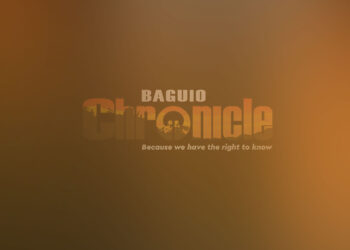I WONDERED why Biag ni Lam-ang was getting bad comments in a certain FB post about another module gone viral. What appeared to earn everyone’s ire were sentences used in a grammar lesson: “He was killed by the Igorots” and “The Igorot enemies will be punished by Don Juan.” The sentences are based on incidents taken from Biag ni Lam-ang, the famous Ilokano epic. Indeed the story includes a battle between Lam-ang and the Igorots — a battle which, of course being in an Ilokano epic, had to be won by the Ilokano hero.
The reactions to the module included questions as to whether we should be teaching Biag ni Lam-ang in the first place. The epic was called “problematic” and “promoting discrimination” for portraying Igorots as murderous villains. One netizen shared a story about being called a “headhunter” by classmates after a classroom lesson on Biag ni Lam-ang. Some just don’t like the way Igorots were antagonized in the story. There were calls to “stop teaching” or even “stop publishing that story.” There were those who questioned why Igorots should be learning the Ilokano epic in the first place. The word “archaic” got thrown in as well, as if other great epics like the Ifugaos’ Hudhud, the Maranaws’ Darangen, or even Homer’s Iliad and Odyssey were also not archaic.
This is the instance where “Igorots” were mentioned in the epic, and I quote from the Yabes version: “Isu met ti ipapanawnan ni Don Juan / a simmurong iti karayan, / napan idiay bantay kangisitan; / Ta napan makidangadang / kadagiti iggorot a burikan.” Translated into English, it was Don Juan who went on “to engage the checkered Igorots in a fight” (checkered = tattooed). When Don Juan does not return, Lam-ang goes to look for his father: “Gubat ti inna napanan / iti ili a kaiggorotan…” and when he does find him: “Ket inna met nakitan / daydi bangabanga ni amanan, / ta napanda met sinarukang / nga impasango iti dayaan. / Ket kinona ni Lam-ang, / ‘Ay iggorot a burikan, ta sumaludsudak man / no ania’t nakabasolan / ni ama a naggapuan, / rebbengna nga inkay bayadan.” Now, imagine having a lively discussion in class based on the exchange between Lam-ang and the “iggorot a burikan.” Ania’t nakabasolan ni Don Juan? Why indeed was Don Juan killed by the Igorots in the story? (and not just killed — his head severed!) We will find that the answers are all in the text, if only we take time to engage with the text, and not just three-paragraph summaries of Lam-ang.
If Lam-ang is “problematic” to the Igorot reader, it is all the more reason we discuss it. We need to clarify that Biag ni Lam-ang used to be recited by word of mouth, memorized and passed on through generations, most likely with a pagan origin, and following Virgilio Almario’s chronicling of Lam-ang, it was probably recited by 17th-century blind poet Pedro Bukaneg, whose recital was transcribed by someone who knew him, until it went through a series of translations and transformations, with the text becoming more and more colonized, passing through Spanish chroniclers like Fray Francisco Lopez. So it is worth noting that the story fell into the hands of a Spanish witness. (On another note, former dictator Ferdinand Marcos did an epal move by adding his own name “Marcos” as one of the characters in the epic.)
Most importantly: during pre-colonial times, the Iloko and the Igorot were more connected and more allied than we now assume. Accounts from local oral histories and various scholars point out that Ilokanos and Igorots share a common heritage. W.H. Scott wrote about how BOTH lowlanders and highlanders wore g-strings and practiced headhunting before colonization. Scholar Arnold Azurin wrote about how warriors from the mountains often joined lowlanders whenever they “rose in arms against the colonizers.” Anthropologist Michael Canilao wrote about the gold trade where Igorots mined the gold and Ilokanos refined it. Isinulat naman ni Prof. Rodriguez-Tatel na sa “ulat ng mga Espanyol masisipat ang katotohanang may interdepensyang umiiral sa pagitan ng mga Iloko at Igorot sa simula pa lang.” Even in local oral histories, we share a common ancestry: Ibaloys migrated from Pangasinan to Benguet because of the gold mines, and even Biag the founder of dap-ays in Sagada originated from Candon.
Instead of reading Biag ni Lam-ang as “discrimination against Igorots,” why don’t we read it as a reflection of how our colonizers shaped the narrative in order to divide us, pitting Iloko and Igorot against each other? Biag ni Lam-ang went through a process of having been colonized, and in the colonizer’s eyes, who would make better villains than the pagan Igorots who thwarted Spanish invasion until the end?
We ought to use Biag ni Lam-ang as an entry point to talk about Iloko and Igorot relations, and how our colonizers affected those relations. Sayang met nu ikkaten tayo ni Lam-ang. It is possible, even enriching, to teach Lam-ang to Igorot students. This requires us, teachers, to be more careful with our art of questioning. Biag ni Lam-ang is the product of Ilokano genius, but also the product of colonizing forces. Nan importante: we must not fall into the colonial trap of thinking that we are divided, or that we are a “different race” from Ilokanos or any of our lowland brethren. We are more connected than we think.









